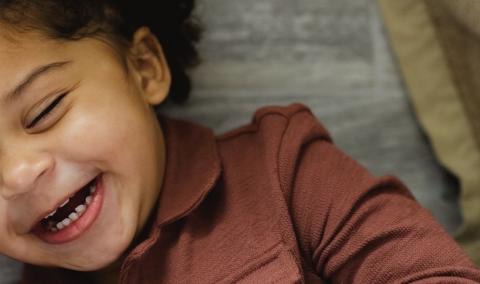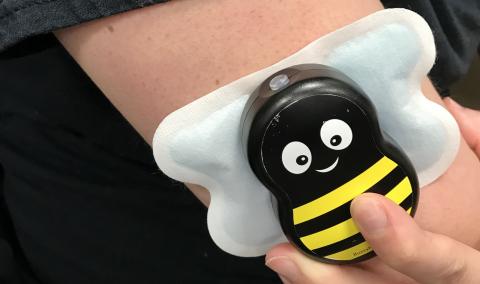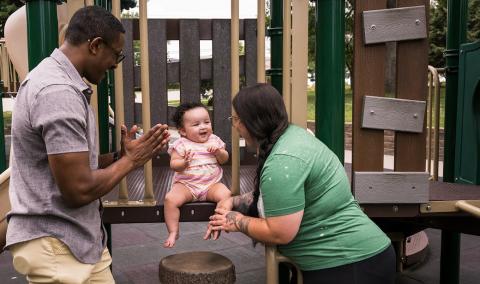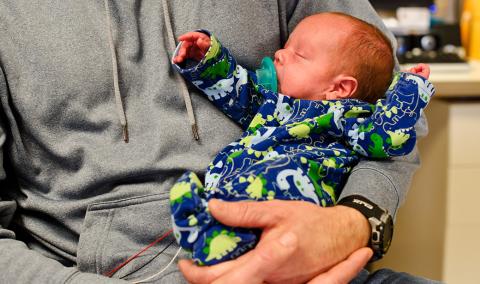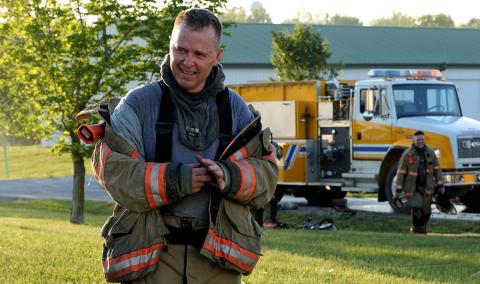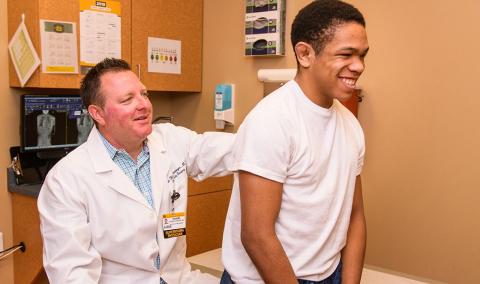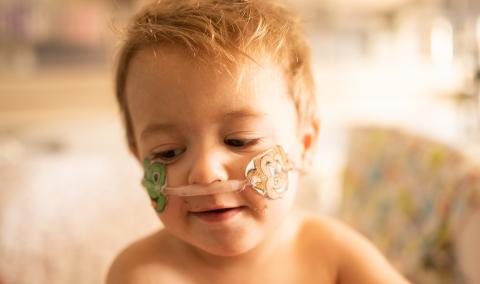Syndactyly, the most common congenital hand anomaly, is an abnormal connection of fingers or toes to one another.
When your child has these “webbed” fingers or toes, you can trust the Children's Health specialists at Children’s Hospital to expertly treat the condition.
Treatment for syndactyly
Our team of pediatric experts treats syndactyly with an operation that separates the digits using skin from the digits. Usually skin grafts from the lower abdomen are used to cover the separated fingers.
When the small finger or thumb is involved, this procedure is done at about six months of age to avoid distortion of the adjacent ring or index finger with growth, since the thumb and small finger are shorter than their neighboring digits. Otherwise, surgery is performed at about 18 months of age. Before this age, the incidence of wound healing complications and skin graft failures is significantly higher.
In special cases with very complex syndactyly — or complicated syndactyly, such as in Apert’s syndrome — we may recommend earlier surgery. Your child may need multiple procedures in a staged sequence to achieve separation of all the digits.
Frequently asked questions about syndactyly
Check out the answers to commonly asked questions about this condition.
What is syndactyly?
With syndactyly, the fingers and/or toes are “webbed” (fused together), meaning they have failed to separate normally during fetal development. It most commonly involves the middle and ring fingers. In about 50 percent of cases, both hands are involved. Syndactyly may occur alone or with other anomalies as part of a syndrome.
Does syndactyly cause my baby any pain?
Typically, syndactyly is not painful. However, in some very severe cases in which the nails might dig into the joined fingertips, minor infections and wounds may cause some discomfort.
What are the different types of syndactyly?
Syndactyly occurs in different forms:
- Complete syndactyly. This occurs when the digits are joined all the way to their tips.
- Incomplete syndactyly. This occurs when the digits are joined only part way up the length.
- Simple syndactyly. The digits are joined by the skin and soft tissue only.
- Complex syndactyly. The bones of the digits are fused together.
Who gets syndactyly?
Syndactyly can occur in any newborn infant. Overall, syndactyly occurs in approximately one out of 2,500 newborns. In up to approximately 40 percent of cases, there is a family history of syndactyly.
If syndactyly occurs alone, it is inherited as an autosomal dominant condition; that is, the children of an affected individual will have a 50 percent chance of having syndactyly. However, syndactyly is not the same from one generation to the next and can be more or less severe than in the affected parents. Syndactyly is more common in Caucasians than in other ethnicities and affects boys twice as often as girls.
What causes syndactyly?
When the hands and feet are developing in the womb, they start out as flat “paddles” that then normally separate into five digits. Syndactyly occurs when there is a failure of this separation process. This may be caused by a genetic abnormality or by environmental influences.
What are the main issues related to syndactyly?
The primary issue in syndactyly is your baby’s inability to use his or her hands and fingers. Syndactyly causes limitation of function because the involved digits cannot move completely or independently. In very severe cases, with multiple digits involved in complex syndactyly, your child may have problems with infection and skin breakdown.
Are there other problems that may occur with syndactyly?
Some children with syndactyly will have other congenital (present at birth) abnormalities or syndromes. Syndactyly may occur as part of different syndromes. For example, with craniofacial dysostosis syndromes, such as Apert’s syndrome, the child has significant head and face abnormalities in addition to very severe, symmetric syndactyly of the hands and feet.
What happens between the time my baby is born and the first surgery?
In some cases, diagnosis is made prenatally by ultrasound exam, and you may have the opportunity to meet our pediatric plastic surgeon before your baby is born. Otherwise, you will meet with him soon after your baby is born. This process includes an examination of your baby and X-rays of the affected hand.
Your baby will continue to be examined in our clinic periodically during the months before surgery where we will carefully explain the treatment plan and the details of the surgical procedures. Usually, your baby won’t require any special treatment or therapy before surgery.
What specialists will be involved in my baby’s care?
Your child’s multidisciplinary treatment team may include a:
- Certified hand therapist
- Developmental pediatrician
- Geneticist
- Hand surgeon
Related Conditions & Treatments
- Adolescent Medicine
- Chest Wall Deformities
- Down Syndrome
- Emergency Care for Kids
- Gastrostomy and Feeding Access Program
- Hyperbaric Oxygen Therapy
- Juvenile Diabetes
- Neonatology
- Pediatric Anesthesiology
- Pediatric Cancer
- Pectus Carinatum
- Pectus Excavatum
- Pediatric Cardiology
- Pediatric Dermatology
- Pediatric Development and Behavior
- Pediatric ENT (Ear, Nose and Throat)
- Pediatric Epilepsy
- Pediatric Eye Care
- Pediatric Gastroenterology
- Pediatric Infectious Diseases
- Pediatric Inpatient Rehabilitation
- Pediatric Nephrology
- Pediatric Neurology
- Pediatric Neurosurgery
- Pediatric Orthopaedics
- Pediatric Plastic Surgery
- Pediatric Primary Care
- Pediatric Psychiatry
- Pediatric Pulmonary Medicine
- Pediatric Sleep Medicine
- Pediatric Surgery
- Pediatric Surgical Services
- Pediatric Urology
- Pediatric Vascular Anomalies
- Pediatric Weight Management
- Sickle Cell Disease
- Aerodigestive Program




